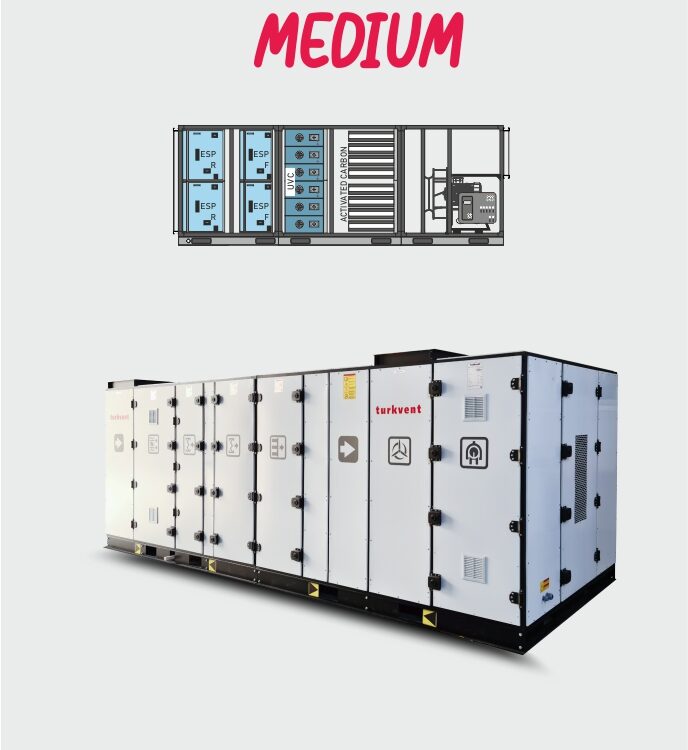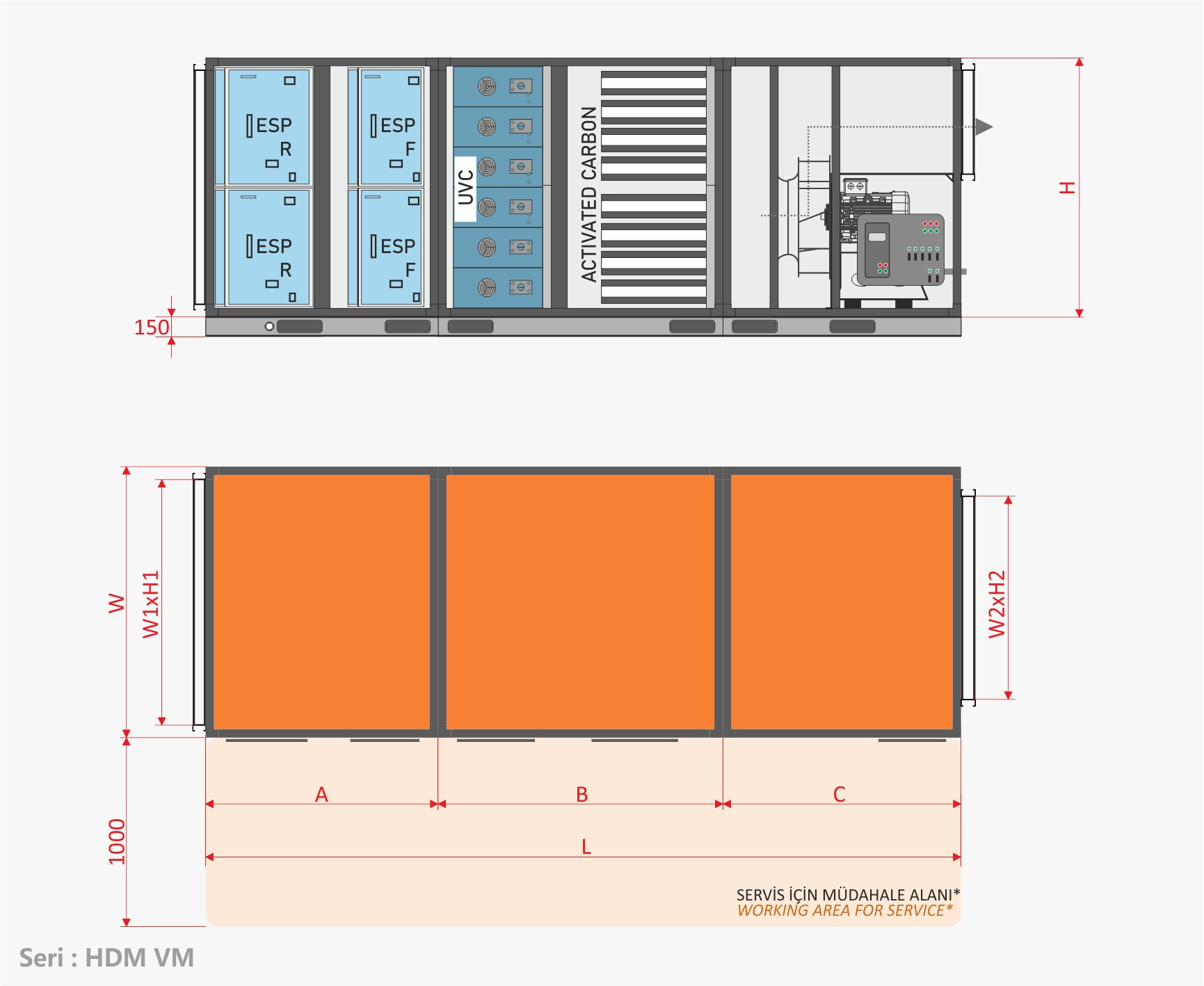Medium Series Kitchen Hoods Ecology Unit Series: HDM VM

Description : KITCHEN EXHAUST ECOLOGY UNIT
Ecology units are ventilation devices in kitchen hoods that filter out oil particles, soot, smoke, and odors from exhaust air before releasing it into the environment, thereby preventing these pollutants from being discharged directly. The most important criterion in selecting and designing an ecology unit is determining the correct configuration based on the kitchen’s characteristics. Central-type ecology units (HDM) are specially designed industrial machines for large-volume kitchens, capable of operating under heavy-duty conditions. With a wide range of airflow capacities that allow multiple areas to be ventilated with a single device, they are particularly indispensable for hotel kitchens, canteens, and food facility kitchens. Additionally, they are recommended models for use in high-volume restaurant kitchens considering their robust design and performance under high-density conditions.
Content :
FILTER : 1;
ESP-R : 96% (@ 3 µm) Yield electrostatic filter Ashrae test
FILTER : 2;
ESP-F : 99% efficiency electrostatic filter ISO16890
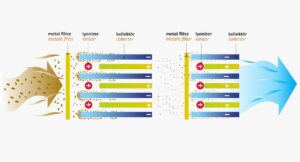
Electrostatic filters convert oil particles in the exhaust air from kitchen hoods into negatively charged ions by passing them through a high-voltage ionizer. These ions then pass through a collector cell composed of alternating positive and negative plates, where the positively charged plates capture these oil particles. The hood exhaust air released into the environment is filtered by the unit, removing up to 99% of particles as small as 0.01 microns (R+F Series). This process ensures that pollutants such as cooking residues, oil, smoke, and soot are purified before being released into nature.
Electrostatic air cleaners are used to collect wet and dry particles such as dust, oil mist, cooking fumes, and various pollutants. The exhaust air containing heavy particles first passes through a washable metal pre-filter that captures coarse particles with the assistance of a fan. Remaining particles, some as small as 0.01 microns, pass through a strong electrical field where each particle acquires an electrical charge (ionization section).
These charged particles then move into a collector plate section consisting of parallel plates arranged at regular intervals. Pollutants are captured on these plates and drained away.
– Removes up to 99% of smoke, oil and fat particles
– Filters particles at submicron levels
– Designed with an internal drainage
– Easy maintenance and cleaning with Modular Cell design
– Specially designed for commercial kitchen application.
– Energy efficient
FILTER : 3;
UVC-P : Ultraviolet lamps producing very intense ozone
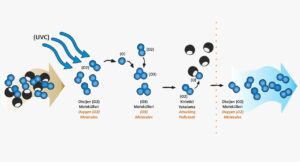
The units are equipped with high-efficiency UV-C lamps that generate ozone. During the cooking process, oils and odors are initially subjected to UV-C light in a process known as photolysis. Subsequently, ozone moves along the exhaust duct in a process called ozonolysis, continuing to cleanse odor molecules.
– Perfectly matched ballasts in combination with long-life UV-C lamps
– High intensity UV-C and ozone technology
– Eliminates grease, soot and gas odours (e.g. heavy smelling fish restaurants)
– Low cost and limited maintenance requirements
– Extends the service life of carbon filters and increases their efficiency
Our units, also known as “odour neutralisers”, break down odour molecules. It destroys odours without masking them. Independently tested
ozone (as used in our ecology unit) successfully neutralises up to 90% of odours. [European Standard EN13725: 2003]
FILTER : 4;
Cartridge type Activated Carbon Granular Filter – 600mm
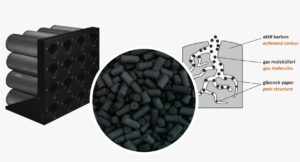
The use of activated carbon filters in controlling gaseous odors is well-known. Traditionally, air passes through their sponge-like structure, absorbing gaseous odors. However, a disadvantage is that they quickly become saturated and therefore require regular replacement. More recent ozone-based (ozonolysis) technologies are proving to be increasingly popular and effective alternatives for controlling gas odors.
However, recent research shows that activated carbon is very effective at removing ozone from the air, which makes activated carbon filters a beneficial complement to ozone-based systems. When used in this way, they remove odors in the gas phase with ozone and further oxidize residual odor molecules trapped on the surface of the activated carbon, thereby extending the lifespan of carbon filters.
Iodine : 900 mg/g (AWWA B 600-78)
Specific Surface Area : 1000 m²/g
Density : 550kg/m³ (ASTM D 2854)
CCI adsorption : 50 % (ASTM D3467)


